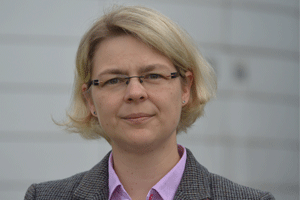BrainHygge: Daniela Sammler
We're ready with the first BrainHygge of 2024 featuring Daniela Sammler from the Max Planck Institute for Empirical Aesthetics in Frankfurt.
Info about event
Time
Location
MIB & CFIN South, Thalamus meeting room, Building 1710, Universitetsbyen 3, Aarhus
Organizer

SPEAKER
Daniela Sammler from the Max Planck Institute for Empirical Aesthetics in Frankfurt, Germany.
TITLE
The neural bases of piano playing: From musical ideas to joint performance.
ZOOM
https://aarhusuniversity.zoom.us/j/62065703272
ABSTRACT
Playing the piano involves more than just hitting the right keys. How does a musical idea turn into finger movements on the piano? And how do musicians coordinate fingers, sounds, and multiple brains when they perform in groups? The present line of research isolated distinct genre-dependent levels of action planning in solo pianists and identified dynamically balanced mechanisms of interaction in duetting pianists using 3T fMRI and (dual) EEG. The data suggest three main conclusions. (A) Musical action plans in solo pianists are hierarchically organized along a prefrontal gradient from abstract harmonic rules to concrete motor sequences (fMRI). (B) Duetting pianists co-represent other-produced actions in their own cortico-cerebellar audio-motor system, in line with ideas of (self and) other internal models during joint performance (fMRI). (C) Interbrain synchrony during joint music making is not merely an epiphenomenon of two brains synchronizing to shared sensory input, but is modulated by the alignment of cognitive processes (dual EEG).
Altogether, it will become clear that piano playing relies—beyond sensory input and motor output—on a range of cognitive processes tuned to achieve harmony, fluency, and synchrony in musical performance.
